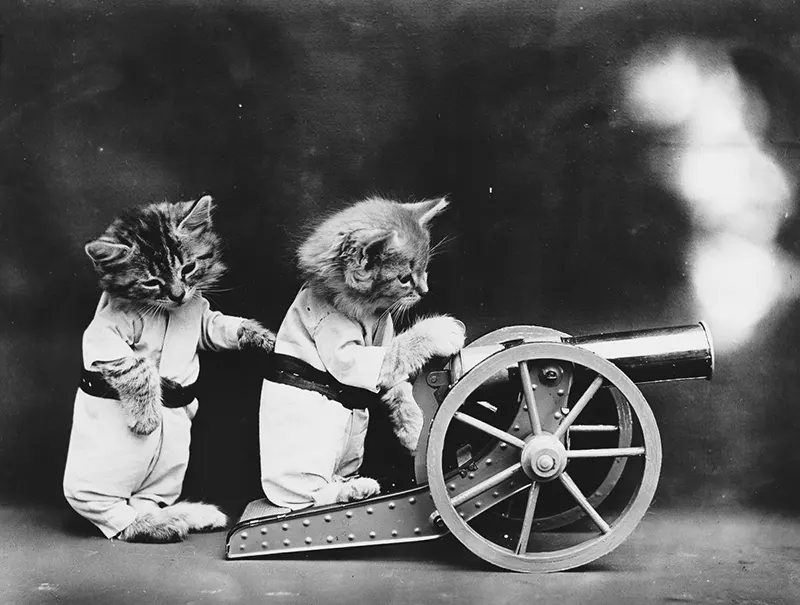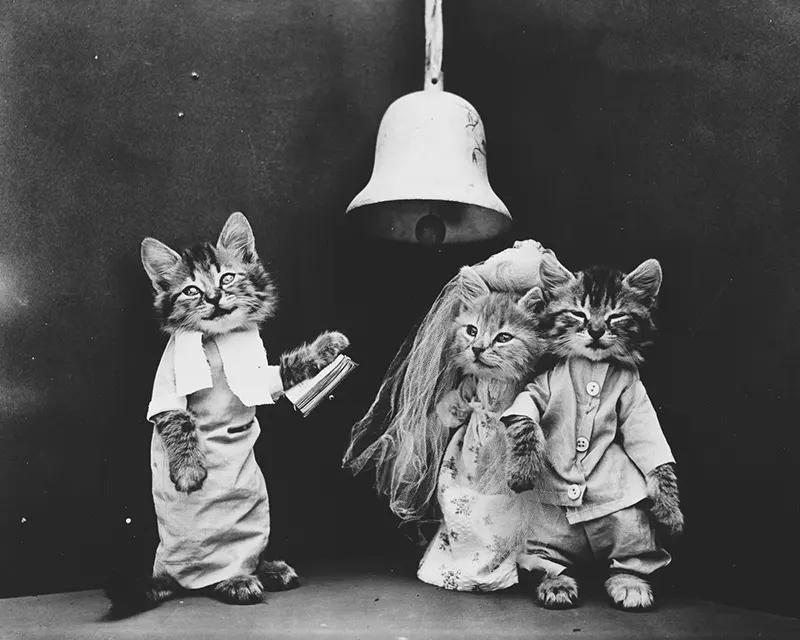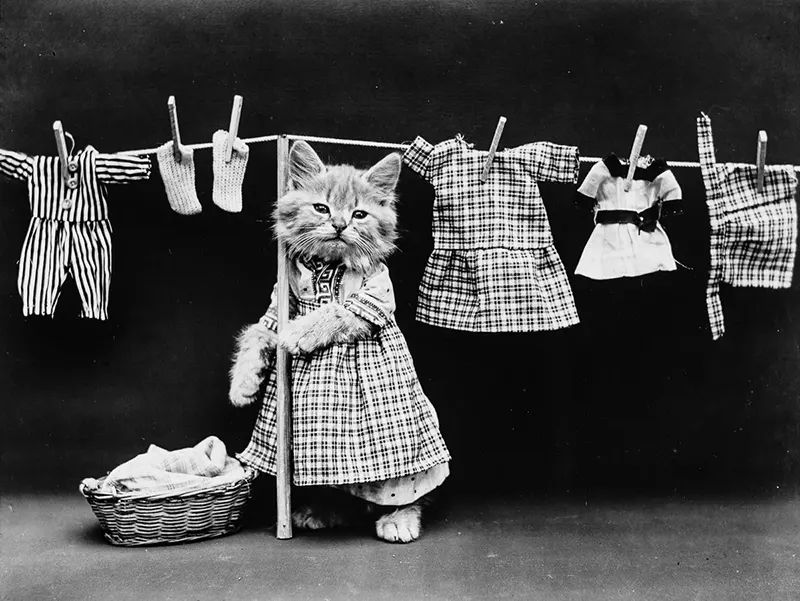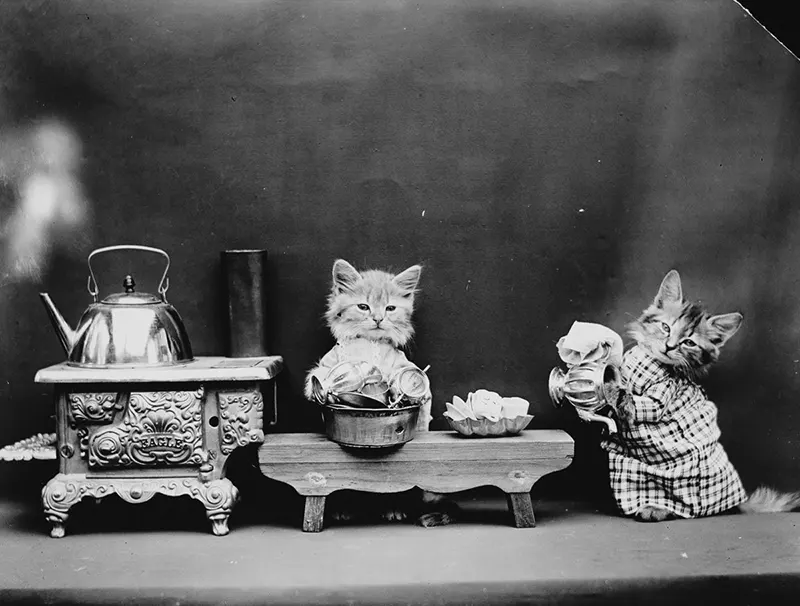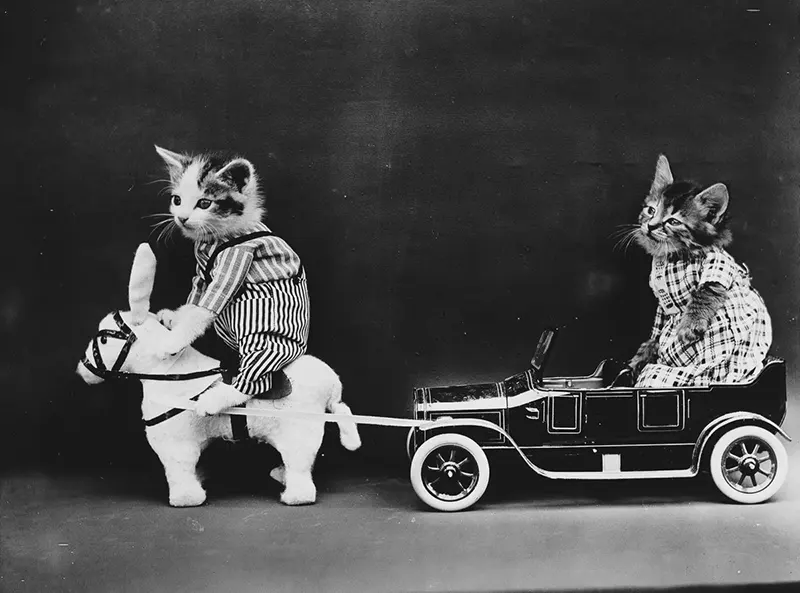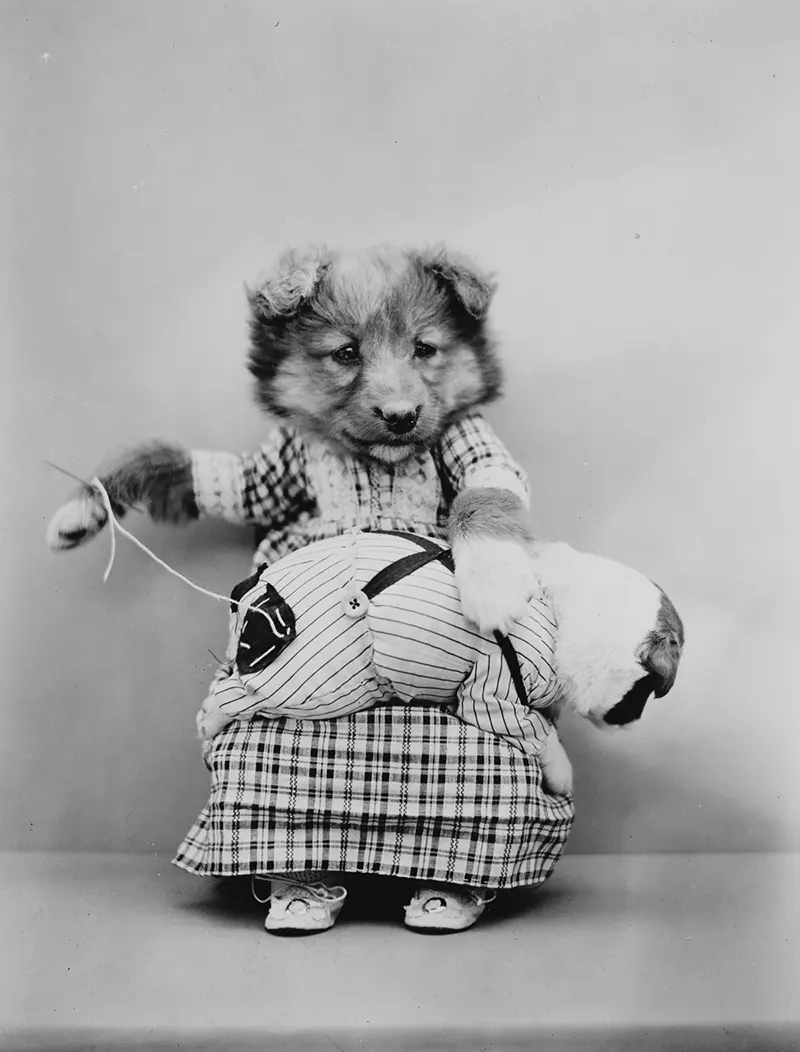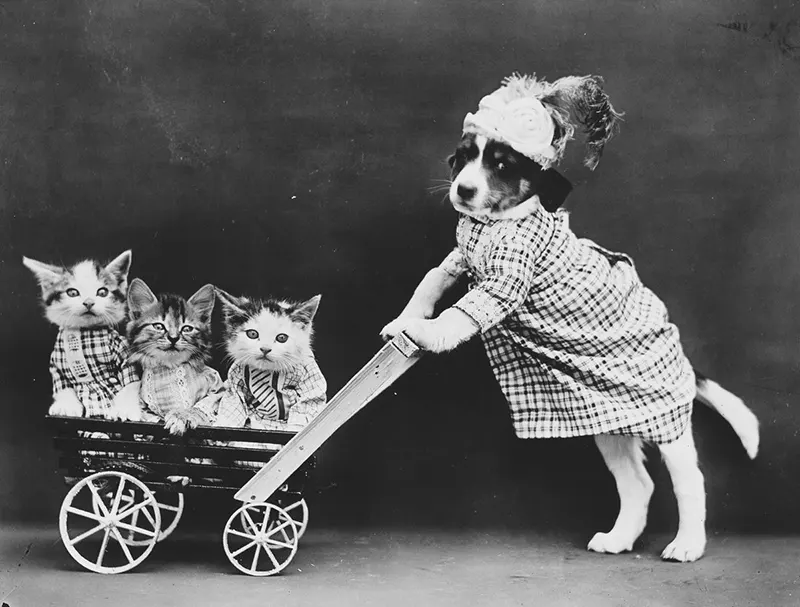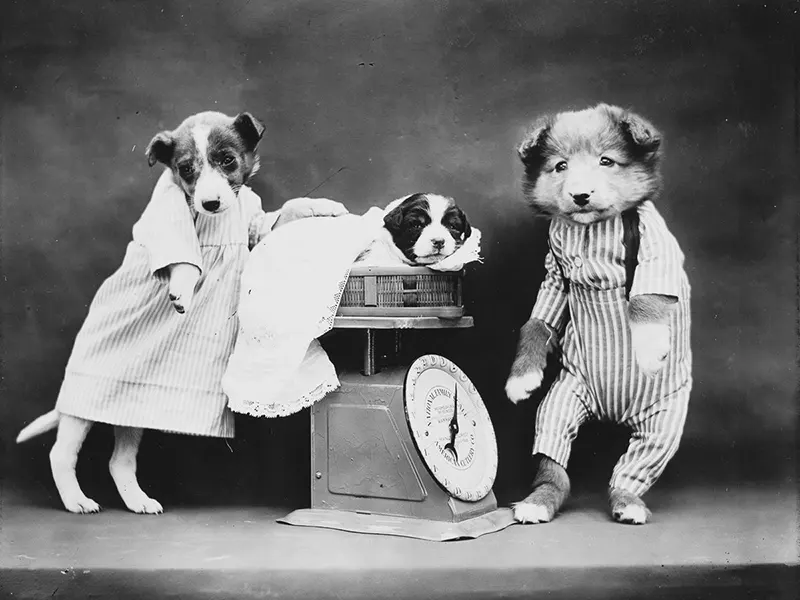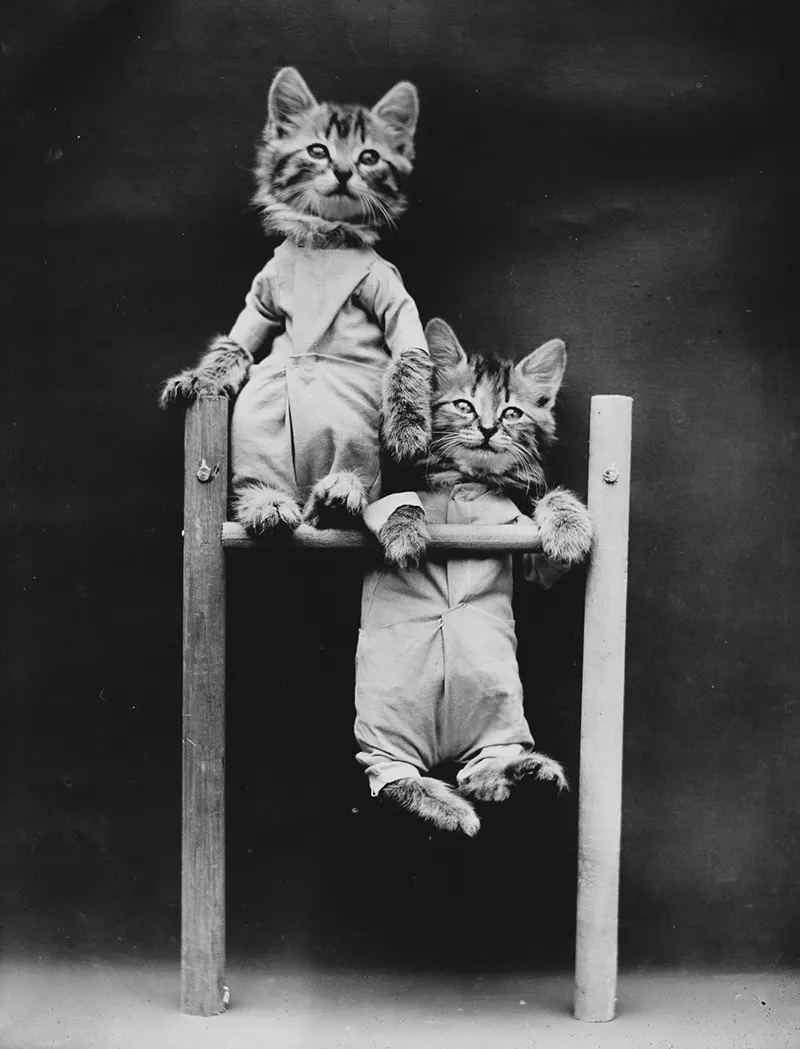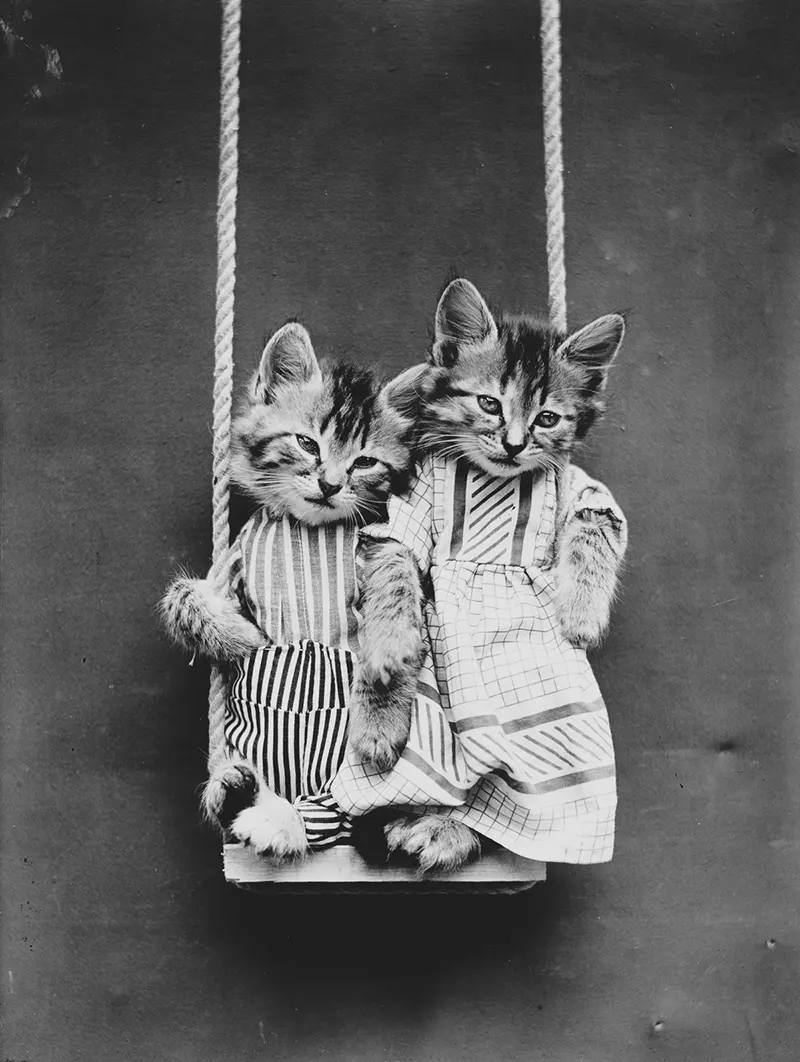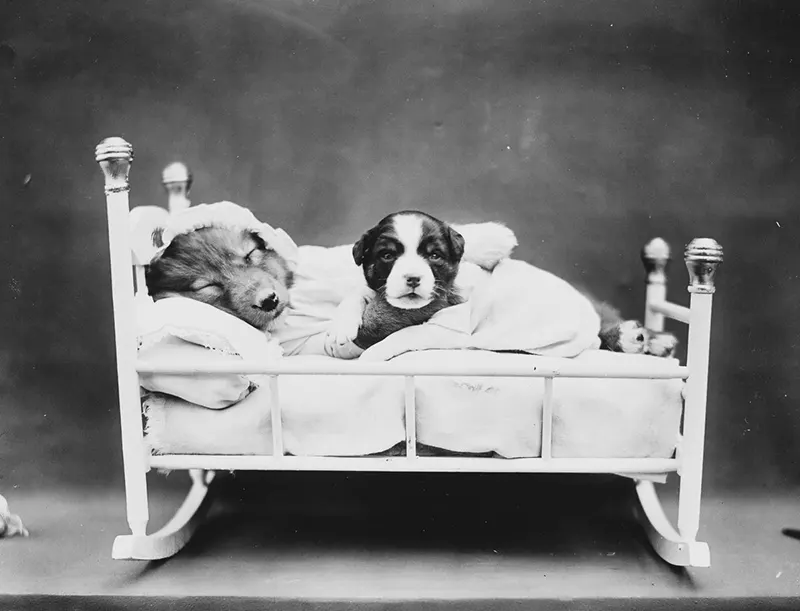This photo collection from the 1910s features bizarre but adorable animals dressed and posed as humans with props, often with captions; these can be seen as progenitors of modern lolcats. Though he began photographing cute animals in 1902, he did not begin dressing them in tiny human costumes until 1905. As the story goes, his “eureka moment” came during a family birthday party. Folks were passing around and trying on a paper hat. Someone stuck it on the family cat and Frees snapped a picture. A postcard manufacturer liked the shot so much he used it, and the image was an instant success. Using live models and, reportedly, no photo trickery, the Frees frames became popular illustrations for novelty postcards, books, calendars, and magazines. He published many books of his own work. Frees came up with scenes for the animals that ranged from activities in a kitchen to puppies being part of a fire brigade. He created the miniature props and furniture pieces himself, and there seemed to be no limit to what he would try: a movie studio camera, a miniature bed, a washtub, an ironing board, a ladder, an old-fashioned microphone, a scooter, and a sled, to name just a few of the items he fashioned. He used 1/5th of a second exposure and held the animals in position using stiff costuming, pins, and forks. Knowing that people couldn’t resist young animals, Frees also began using younger animals. This posed challenges as he knew puppies and kittens are at their most photogenic when they are between six and ten weeks of age. This meant Frees needed a continuous supply of young animals. He found that he could borrow animals from neighbors or rent them from a local pet store. Sometimes he photographed chicks, bunnies, and even a piglet. On the choice of cats for his photos Frees states in his book Animal Land on the Air: Rabbits are the easiest to photograph in costume, but incapable of taking many ‘human’ parts. Puppies are tractable when rightly understood, but the kitten is the most versatile animal actor, and possesses the greatest variety of appeal. Overall Frees was successful, though he did not enjoy lifelong financial stability. He never married, devoting his life to his photography and caring for his parents. After their deaths in the 1940s, Frees moved to Clearwater, Florida, where he lived in isolation. At some point, he was diagnosed with cancer. He died in March 1953. From an obituary in the St. Petersburg Times: “Despondent over what he regarded as an incurable disease, Harry Whittier Frees, 74, of 709 Senaca Street, took his own life sometime Sunday by turning on the gas stove in the kitchen.” (Photo credit: Harry Whittier Frees / Library of Congress / NPR.org / America Comes Alive / Wikimedia Commons). Notify me of new posts by email.
Δ Subscribe
